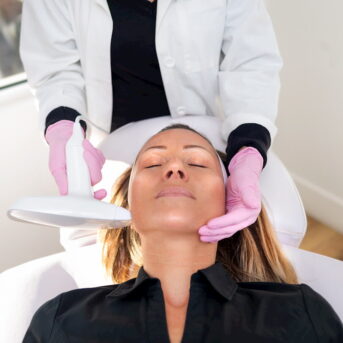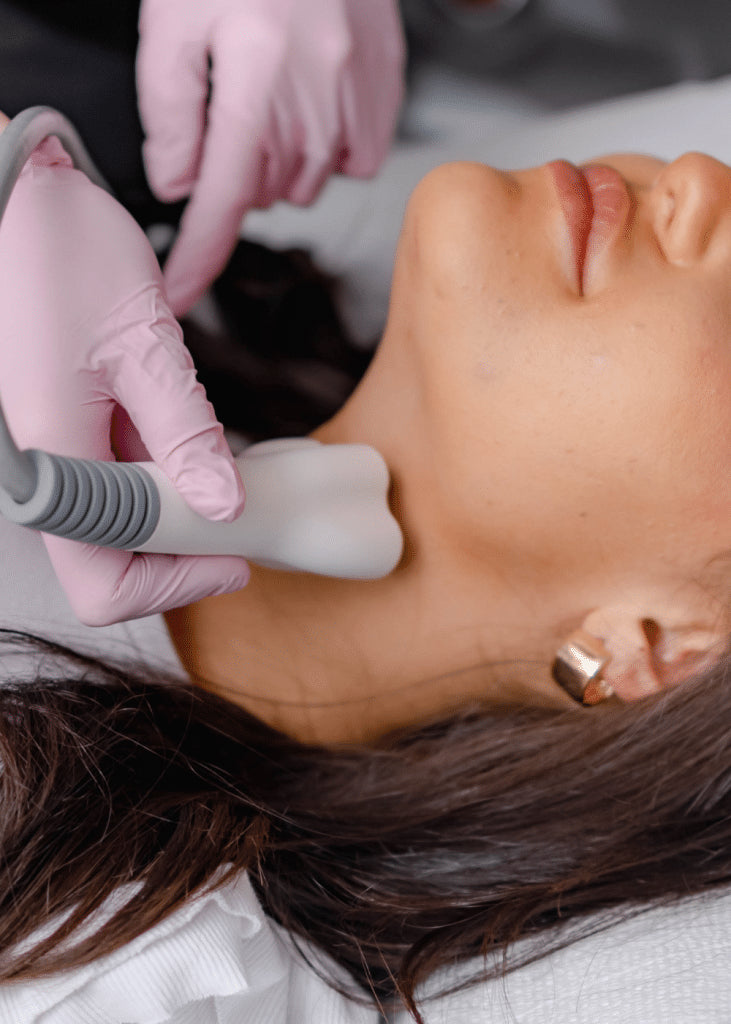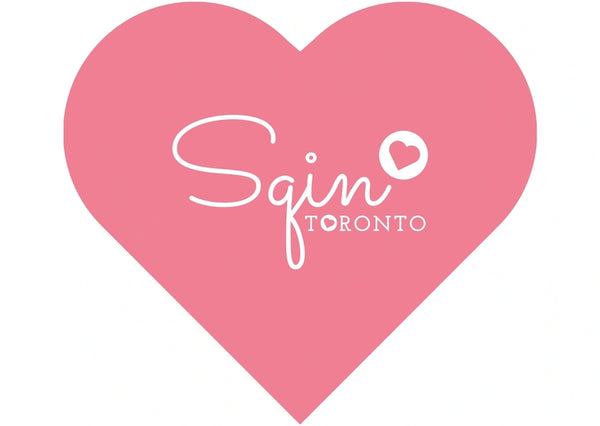Sqin Toronto
Contour Viva
Contour Viva
Couldn't load pickup availability
Contour Viva - 135min
RF Contour + Viva + LED
Unveil a more youthful, radiant complexion with the Contour Viva—an advanced facial treatment that combines RF Contour, Viva Nanofractional Resurfacing, and LED therapy for comprehensive skin rejuvenation.
The journey begins with RF Contour, a cutting-edge technology that uses radiofrequency energy to stimulate collagen production and tighten the skin. This non-invasive procedure helps lift and sculpt the contours of your face, reducing the appearance of fine lines and sagging, and improving overall skin firmness.
Next, a topical anesthetic will be applied for 20-30 minutes. Then you will experience the transformative effects of Viva Nanofractional Resurfacing. This innovative treatment targets the skin’s surface with precise, fractional energy, promoting the natural healing process. It effectively addresses uneven texture, scars, and pigmentation, revealing a smoother, more even skin tone.
To enhance and complete your treatment, LED therapy is incorporated to further boost skin health. LED light stimulates cellular repair, reduces inflammation, and enhances the skin’s natural glow, leaving you with a revitalized and luminous complexion.
Ideal for all skin types, the Contour Viva delivers immediate and long-lasting results, combining advanced technologies for a comprehensive approach to skin tightening, resurfacing, and brightening.
Rediscover youthful radiance and firm, flawless skin with the Contour Viva.
Recovery
The downtime for Venus Viva Nanofractional Resurfacing treatment typically ranges from 3 to 7 days, depending on individual skin type and the intensity of the treatment.
You will be advised that you CAN wear makeup the next day if you wish but it is advisable to avoid if possible. Ensure you cleanse skin gently and thoroughly after makeup application.
Avoid heat to the skin and excessive sweating. Avoid hot water on the skin, baths, saunas, and jacuzzis.
Here’s a breakdown of what you might expect during the recovery period:
- Initial 24-48 Hours:
-
- Redness and Swelling: The treated area may appear red and swollen, similar to a mild sunburn. This is normal and usually subsides within a couple of days.
- Discomfort: Some discomfort or a sensation of warmth might be felt
- Days 2-4:
-
- Red dots: You may experience small red dots present (the skin that was ablated.) This is a natural part of the healing process as new and refreshed skin forms underneath.
- Tightness & Sensitivity: The skin may feel tight, itchy or sensitive, and it’s important to use hydrating skincare products.
- Days 5-7:
-
- Improvement: Redness and swelling should significantly diminish, and red dots should resolve.
- Resuming Normal Activities: Most people can resume normal activities after about 3-5 days, though avoiding direct sun exposure and strenuous activities is recommended until full healing occurs.
-
Post-Treatment Care:
- Sun Protection: It’s crucial to use sunscreen with high SPF to protect the healing skin from sun exposure.
- Hydration: Keeping the skin well-hydrated with recommended products helps support the healing process.
Always follow the specific aftercare instructions provided by your practitioner to ensure optimal results and minimize any potential side effects.
Best Results:
3-6 sessions
4 weeks+ interval
annual maintenance
Contraindications
Active Skin Infections: Individuals with active bacterial, viral, or fungal infections (e.g., herpes simplex, impetigo) should avoid treatment to prevent complications and promote healing.
Recent Use of Accutane: Patients who have used Accutane (isotretinoin) within the last 6-12 months should avoid nanofractional resurfacing due to increased skin sensitivity and potential adverse effects.
Severe Skin Conditions: Those with severe eczema, psoriasis, or rosacea may need to avoid treatment or seek medical advice, as the procedure could exacerbate these conditions.
Open Wounds or Recent Surgery: Areas with open wounds, recent surgical sites, or significant trauma should not undergo nanofractional resurfacing to ensure proper healing and avoid complications.
Pregnancy and Breastfeeding: Although the procedure is generally considered safe, it’s advisable to consult with a healthcare provider before undergoing any cosmetic procedures during pregnancy or breastfeeding.
Autoimmune Disorders: Individuals with autoimmune skin conditions or disorders may need to avoid treatment or seek advice due to potential for adverse effects or flare-ups.
Blood Thinning Medications: Those on blood thinners or with bleeding disorders should consult a healthcare provider before treatment to prevent excessive bleeding or bruising.
Recent Injectables, Chemical Peels or Laser Treatments: Clients who have recently undergone other treatments should wait until their skin has fully healed. Generally 2 weeks.
Sunburn or Recent Sun Exposure: Skin that is sunburned or recently exposed to intense sunlight should be healed before undergoing Viva to avoid increased sensitivity or adverse reactions.
Skin Cancer: Individuals with a history of skin cancer or suspicious lesions should consult their healthcare provider before treatment to ensure it’s safe for their skin condition.
Keloids: Individuals with a known tendency to develop keloids (excessive scar tissue formation) should generally avoid resurfacing and microneedling. The procedure's impact on the skin's healing process could potentially exacerbate keloid formation or lead to complications in individuals predisposed to this condition. Always consult with a qualified practitioner to assess the risks and explore alternative treatments.
Always consult with a qualified practitioner to evaluate individual suitability and ensure the treatment aligns with personal health conditions and medical history.
Share




